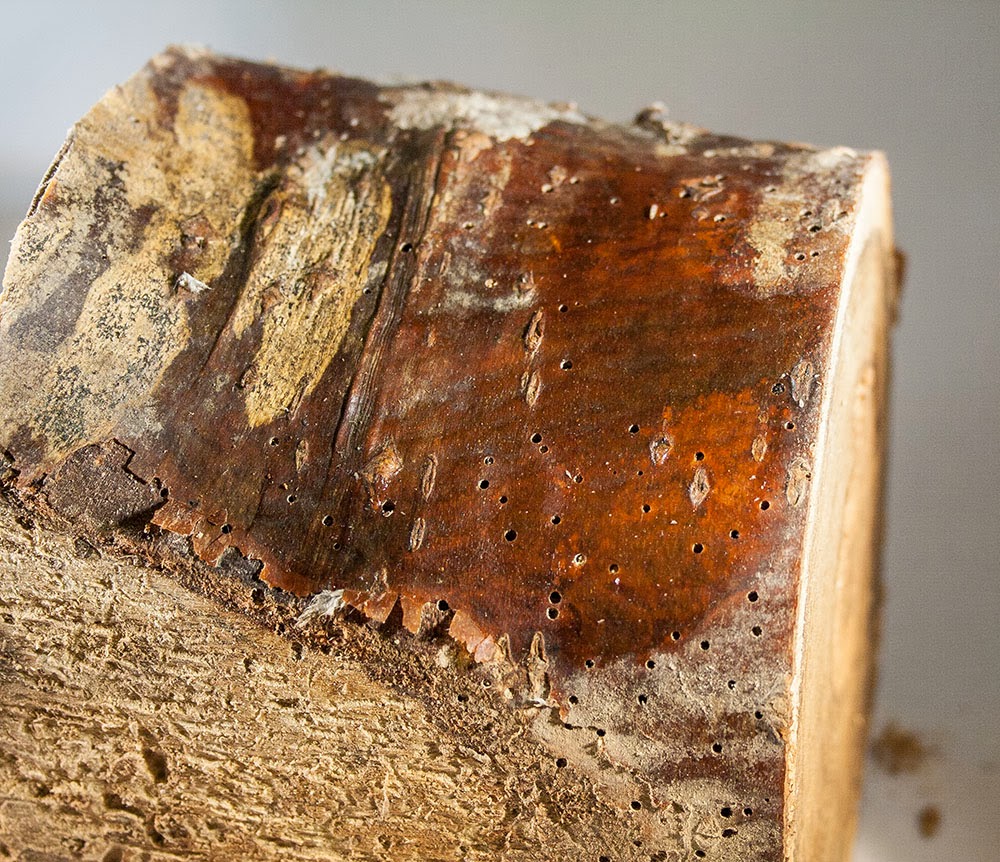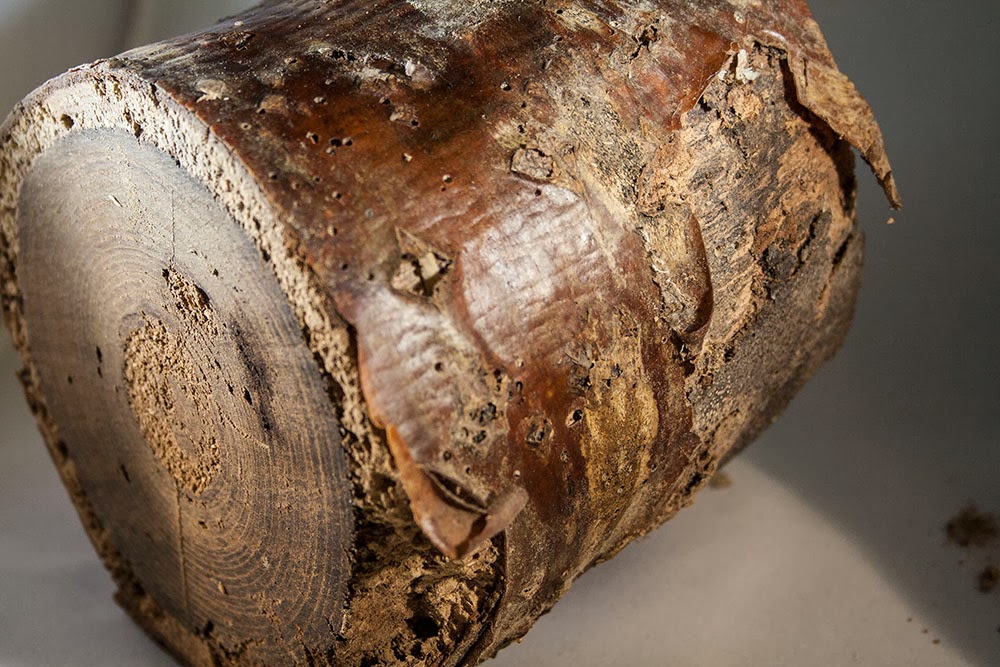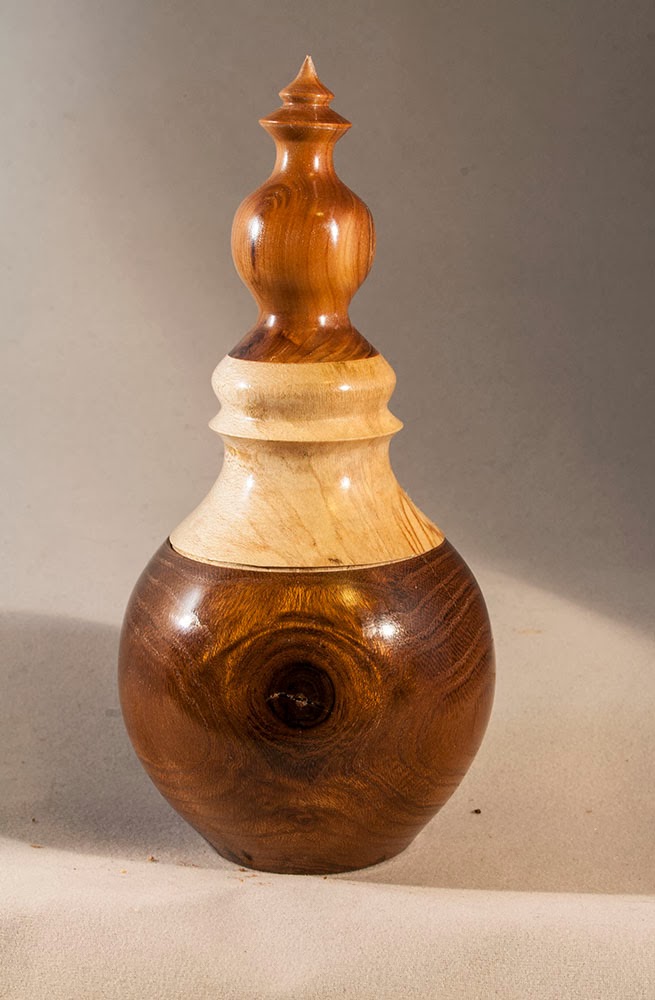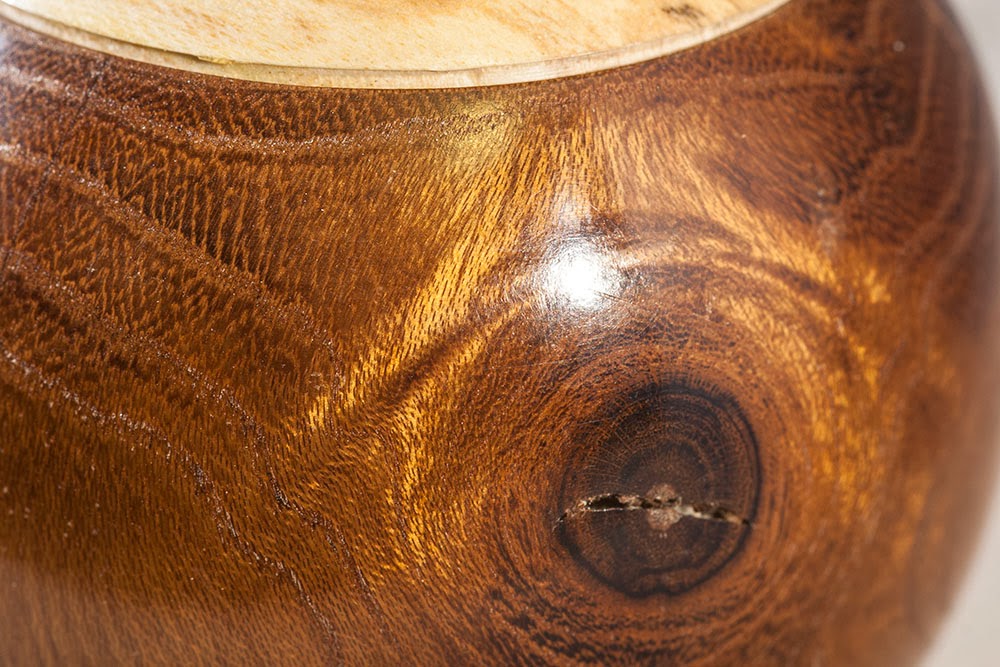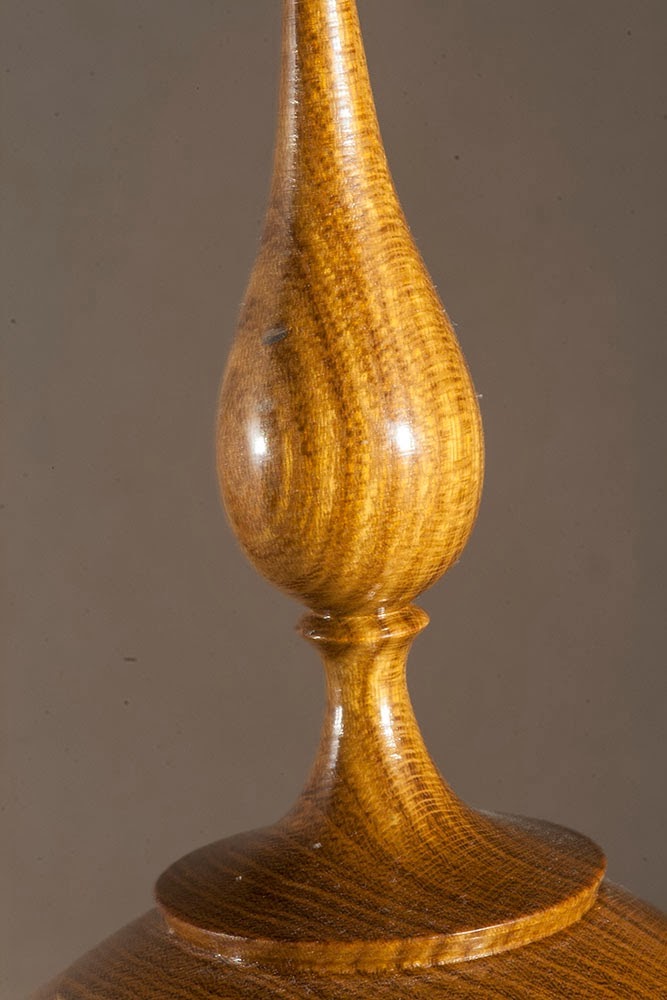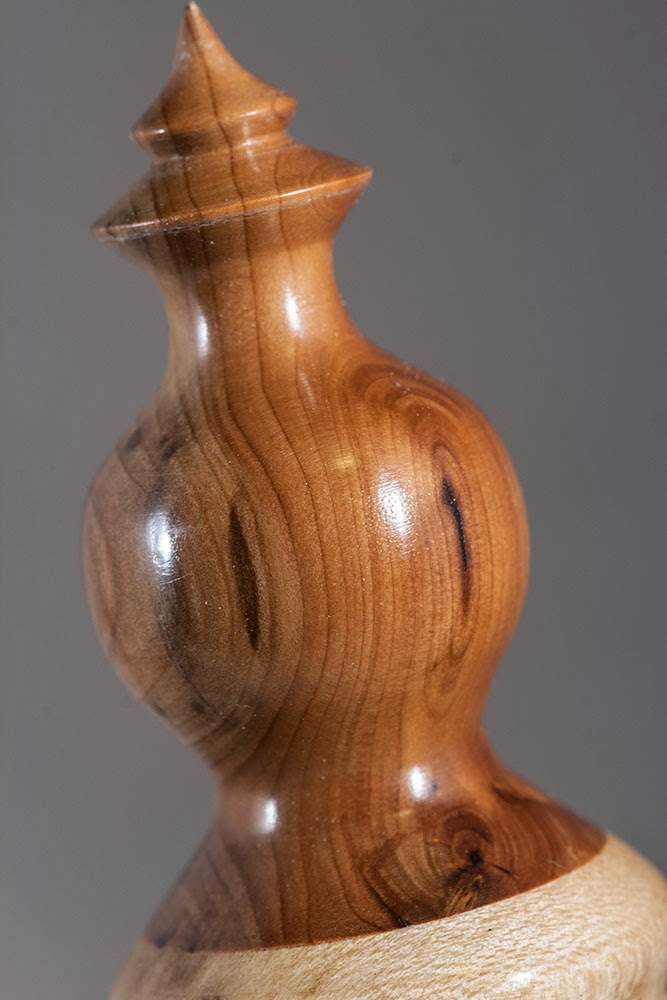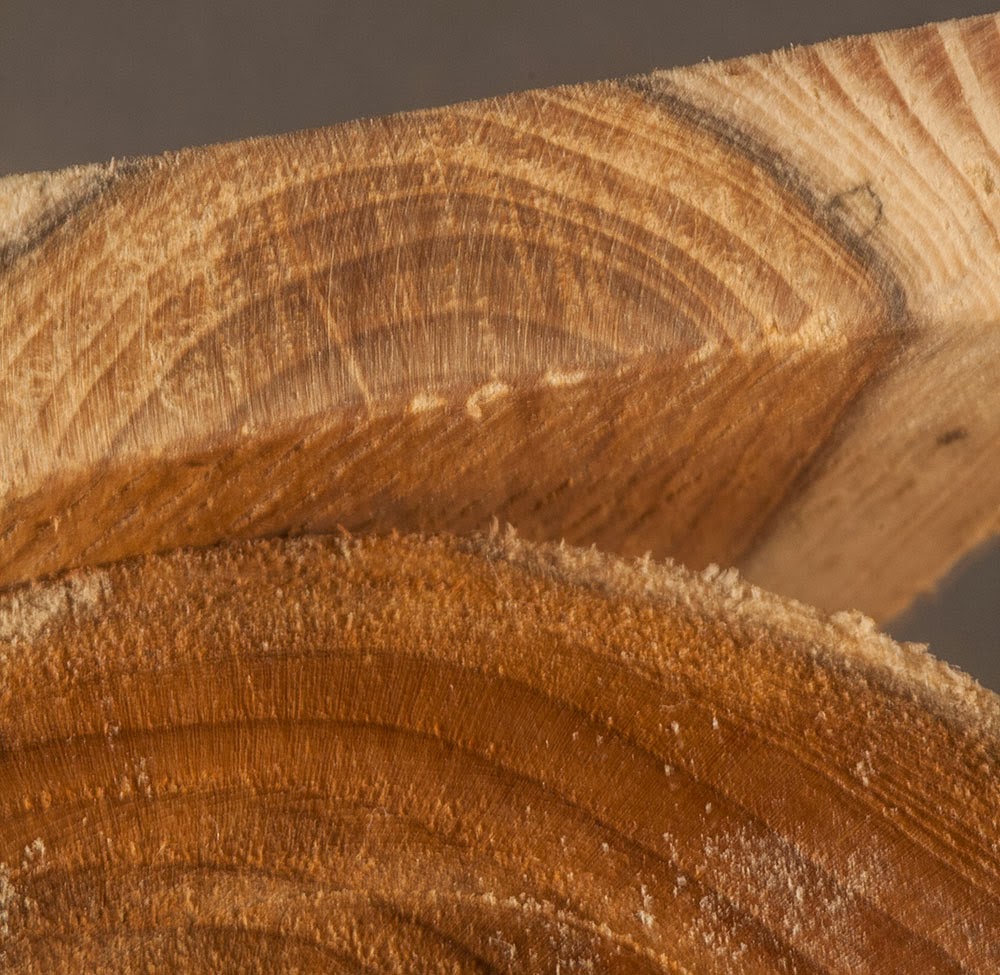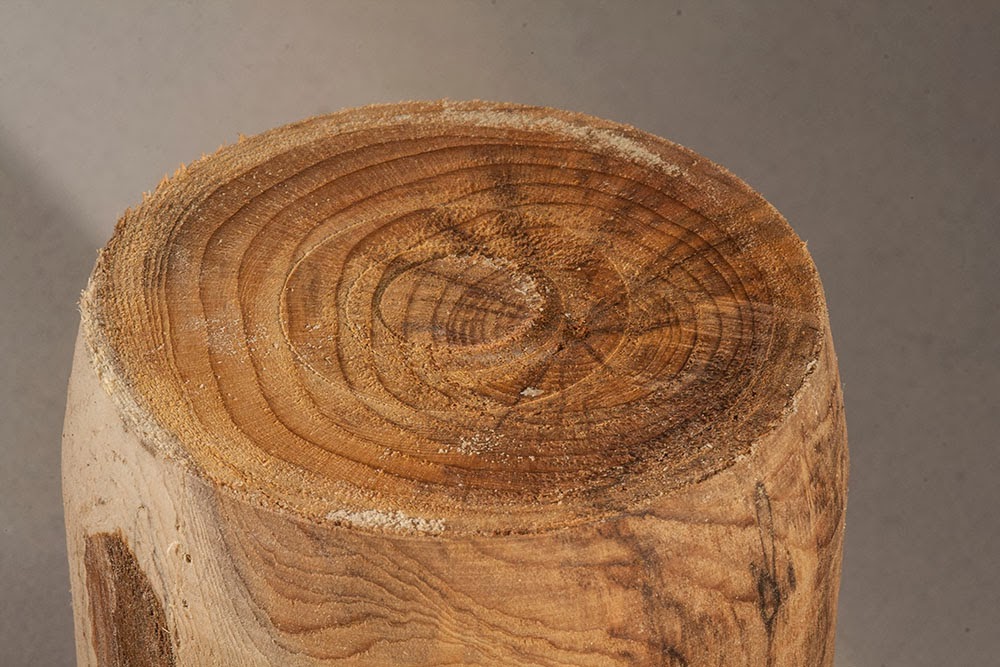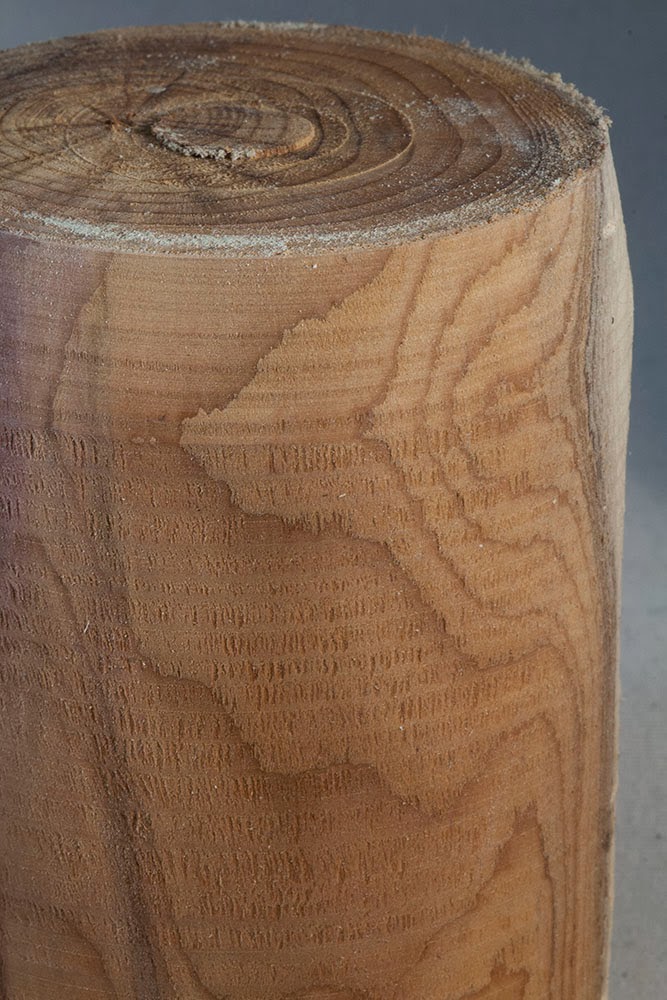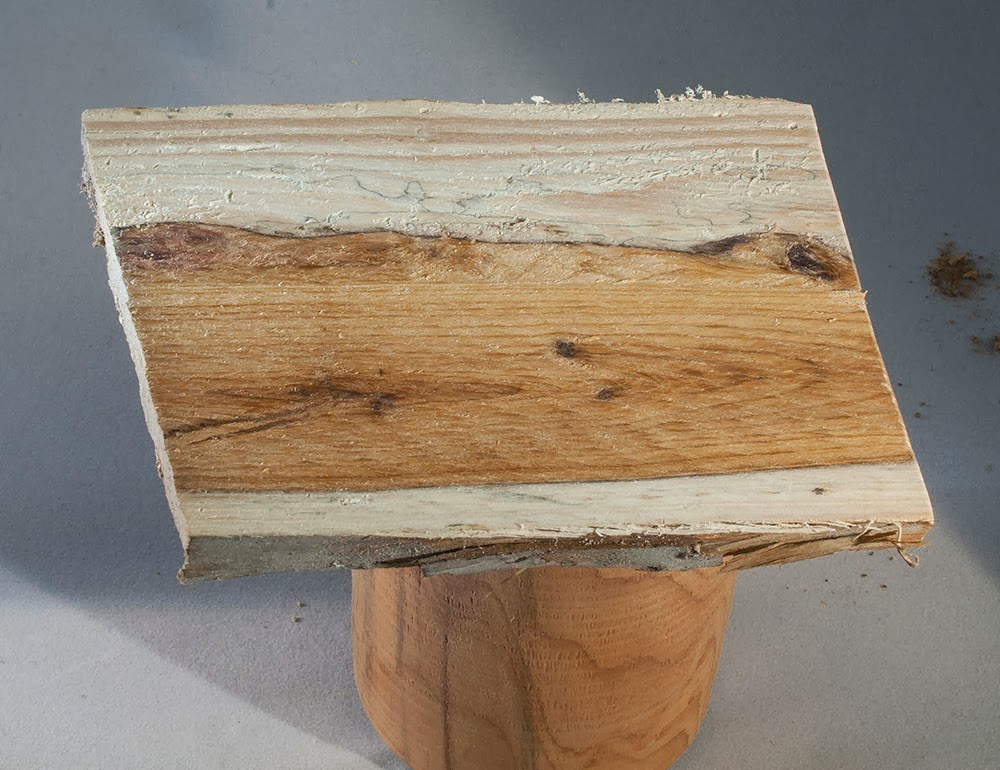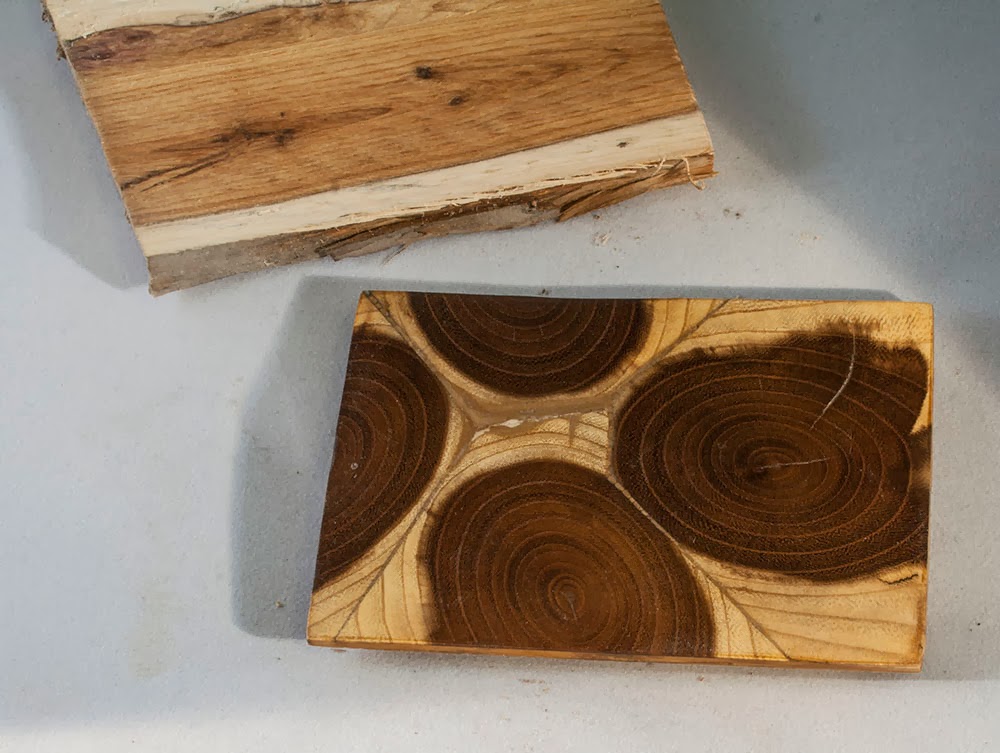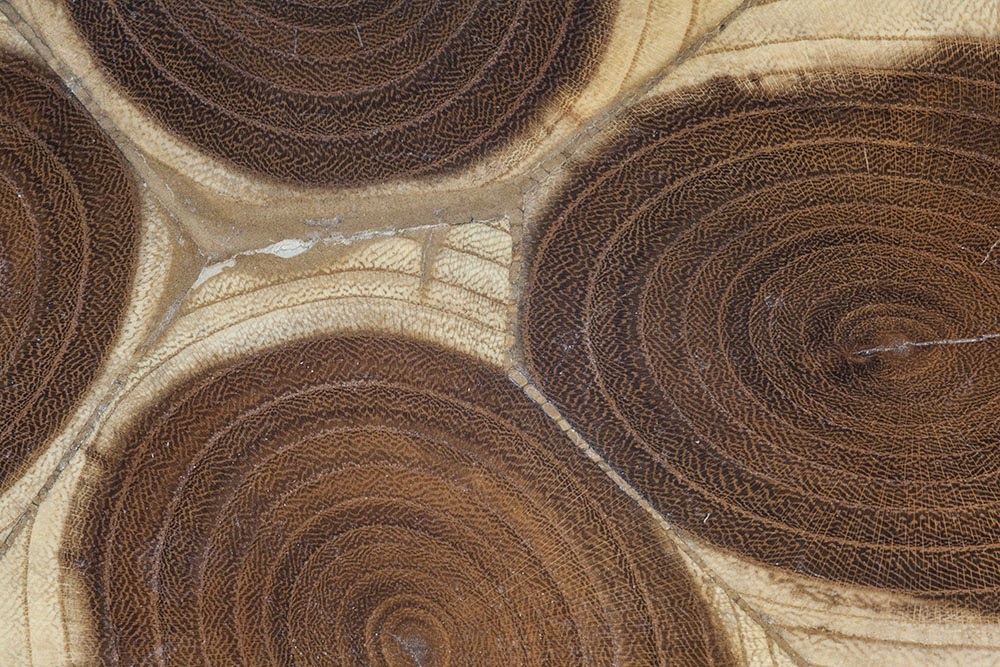OK, so first off lets consider the bark, some excellent images of Yew bark have already been posted up, here are a couple of images of Laburnum Bark, the log is very old, over 20 years (I don't have anything newer just now) But you can clearly see the very smooth nature of the bark and the small blisters (similar to Cherry) which is a classic feature of Laburnum, as also is the slight papery flaking, though this is more pronounced due to the age and dryness of this lump. Also this is a substantial log, it's 160mm in diameter.
Next is an example of Both Yew and Laburnum together in a single turned item, the base is Laburnum, the very top is Yew (the white wood is Sycamore) This provides a visual contrast between the two timber types.
This is a close up of the Laburnum and clearly shows the zigzag patterns in between the growth rings that is so characteristic of pea family woods as described in my previous post.
Here also is a finial in Laburnum showing the same. (Sorry about the top bit of the image being out of focus, but you can see clearly the effect in the lower part).
This image is of the Yew top to the first piece, clearly there is no zigzag, the grain has an open yet distinct appearance typical of softwoods.
Here are two pieces of Yew in macro showing the end grain, again note the absence of any zigzag patterning and the colour (colour though is not a good guide, especially in photographs and even more so in the digital age when the colour of an image can be totally different depending on what white balance setting is used and any post processing)
This too is a very key feature of Yew, note the centre of this sawn bit of Yew, the pith has several dark small crack-like marks radiating out from it, this is VERY characteristic of Yew, particularly in logs of 4 inches or more, Now go back and look at the very first image in this thread and note the appearance of the base of the goblet, it is identical.
Here again is an image of Yew, note in particular the kind of pattern the growth rings show when turned, this is very much a characteristic of Yew, it is quite distinctive. Note the difference in colour here, I used a different white balance and it has substantially affected the overall appearance, the grain pattern however remains the same and is key.
Here is another example of Yew grain, this was freshly cut (albeit from a well seasoned log) just minutes before I took the shot.
Here again is a shot showing both Yew and Laburnum together, the laburnum is slices of end grain and these are called Oysters and were once a common feature of fine furniture decoration.
Finally a close up of the Oysters showing very clearly the distinctive zigzags of Legume timbers, note also that this feature is also in the sapwood.
Looking again at the images of the turned items and of the log, it is clear that the possibility of it being Laburnum is quite out of the question, it fails in every respect to match the characteristics of the wood either turned or uncut, the waxed log bark was fissured much like the fresh Yew log images posted, the older log though did not show so much flaking, but these flakes are quite fragile and could easily have been worn off in storage etc, so that is not key.
The open and distinctively graceful swirls of grain on the turned items are absolutely characteristic of Yew, though for sure, other softwoods could look similar, the colour is a very poor guide, not only because of the variable in photography, but even timbers vary in colour too.
So, while I can be without any doubt at all that this is not Laburnum, and I certainly still think it is Yew, I could not be absolutely certain unless I was able to see it in the flesh, it most definitely is however a softwood of some sort with Yew being the most likely based on the appearance of both the finished wood and the bark on the log.
I have been turning both these timbers for over 30 years and am more than familiar with their key characteristics and variabilities, so I am not without any experience.

